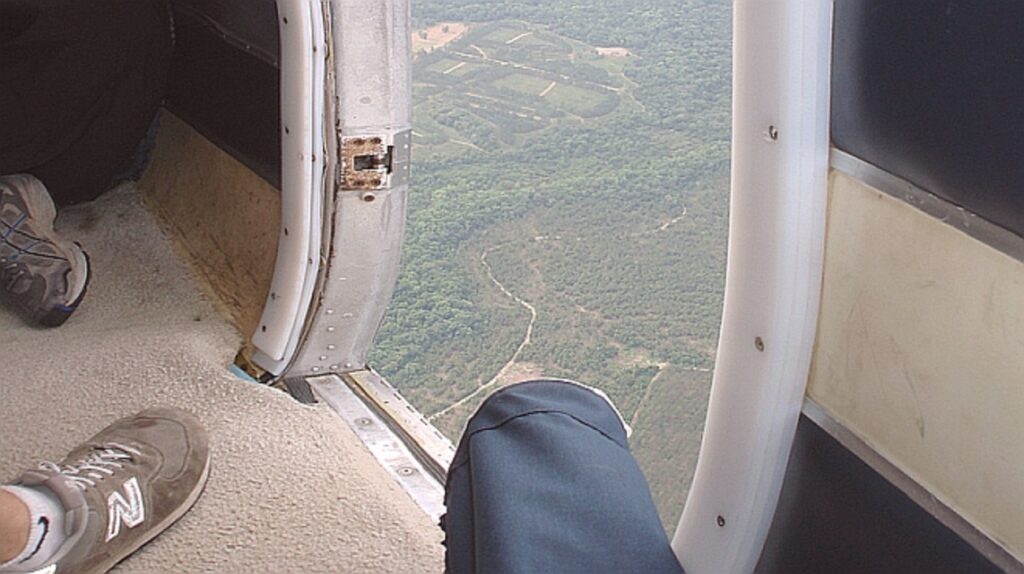
If a door of an airplane opens during flight, it can be a dangerous situation. The sudden change in cabin pressure can cause the aircraft to lose altitude rapidly and can cause injury to passengers and crew. Additionally, the rush of wind and noise can make it difficult to hear or communicate with others.
The pilots are trained to handle this type of emergency and they will immediately take action to stabilize the aircraft and return to a safe altitude. They will also instruct passengers on how to properly use their oxygen masks and emergency equipment.
It is important to note that airplane doors are designed to withstand high pressures and are equipped with multiple locking mechanisms to prevent accidental openings. Additionally, during flight, the cabin crew will perform regular checks to ensure that all doors and emergency exits are properly secured.

Here are some additional details regarding the scenario of an airplane door opening during flight
1.Cabin Pressurization: Modern commercial airplanes are pressurized to maintain a comfortable and safe environment for passengers and crew at high altitudes. If a door opens, the sudden loss of pressure can lead to a rapid decompression of the cabin. This can cause a variety of issues, such as oxygen masks dropping from the overhead compartments and a significant drop in temperature.
2.Passenger Safety: The primary concern in such a situation is the safety of passengers and crew. Unsecured objects, including loose baggage or even individuals near the door, could potentially be pulled out due to the forceful rush of air. Passengers could also be at risk of being injured or thrown around the cabin due to the sudden change in air pressure and airflow.
3.Flight Crew Response: The flight crew is trained to handle emergencies, including door malfunctions. In the event of an open door, pilots will immediately assess the situation, stabilize the aircraft, and initiate emergency procedures. This may involve descending to a lower altitude where the air is denser and the pressure differential is less severe.
4.Communication and Assistance: The flight crew will make announcements to instruct passengers on what to do in such an emergency. Passengers will be advised to fasten their seatbelts, assume the recommended brace position, and use their oxygen masks if necessary. The cabin crew will assist passengers in donning their masks and ensure that everyone is secured safely.
5.Landing and Ground Handling: After stabilizing the aircraft, the pilots will typically initiate a diversion to the nearest suitable airport. Air traffic control will be notified of the situation, and emergency services may be on standby for the aircraft’s arrival. Upon landing, the airplane will be inspected thoroughly, and the door will be properly secured or repaired before the aircraft is cleared for further flights.
It’s important to note that while an open airplane door is a serious situation, it is extremely rare for doors to open during flight due to the multiple safety mechanisms and protocols in place to prevent such incidents. Aircraft manufacturers and regulatory bodies have stringent requirements to ensure the integrity and security of airplane doors.
By – aeropeep team






